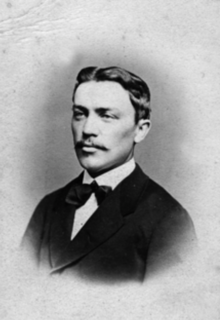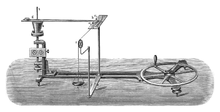Ivan Puluj | |
|---|---|
 | |
| Born | 2 February 1845 |
| Died | 31 January 1918 (aged 72) |
| Nationality | Ukrainian |
| Alma mater | University of Vienna University of Strasbourg |
| Known for | X rays |
| Scientific career | |
| Fields | Physicist |
| Institutions | Imperial-Royal German Technical University in Prague |
| Doctoral advisor | August Kundt |
Ivan Puluj (son of Pavlo Puluj and Xenia née Burshtynska Ukrainian: Іва́н Пулю́й, син Павла́ Пулю́я i Ксенiї, ур. Бурштинської, pronounced [iˈwɑn pʊˈlʲuj]; German: Johann Puluj; 2 February 1845 – 31 January 1918) was a Ukrainian physicist and inventor, who has been championed as an early developer of the use of X-rays for medical imaging. His contributions were largely neglected until the end of the 20th century.
Ivan Puluj graduated with honors from Theological Faculty of the University of Vienna (1869), later also from the Department of Philosophy (1872). In 1876 Pului finished his doctorate on internal friction in gases at the University of Strasbourg under supervision of August Kundt. Puluj taught at the Navy academy in Fiume (Rijeka, Croatia) (1874–1876), University of Vienna (1874–1884) and the Imperial-Royal German Technical University in Prague (1884–1916). He served as the rector of the Imperial-Royal German Technical University (German: Kaiserlich-Königlich Deutsche technische Hochschule) in 1888–1889.[1] Puluj also worked as a state adviser on electrical engineering for Bohemian and Moravian local governments.
In addition, he completed a translation of the Bible into the Ukrainian language.[2][3]
4 October 1884, he married Kateřina née Stožicky (1863–1945) in Vienna.[4][5] They had six children: Natalia (wife of the composer Vasyl Barvinsky), Olga, Maria Xenia Margareta (died in Vienna in 1974), Alexander Hans (1901–1984), Pavlo (died in 1986) and Georg (1906–1987).[6]


Puluj did heavy research into cathode rays, publishing several papers about those rays between 1880 and 1882. In 1881 as a result of experiments into what he called cold light Prof. Puluj developed the Puluj lamp.[7] Puluj experimented with his new device and published his results in a scientific paper, Luminous Electrical Matter and the Fourth State of Matter in the Notes of the Austrian Imperial Academy of Sciences (1880–1883), but expressed his ideas in an obscure manner using obsolete terminology. Puluj did gain some recognition when the work was translated and published as a book by the Royal Society in the UK.[8]
While Puluj's finding were essentially X-rays, he reported his results 6 weeks after Wilhelm Conrad Röntgen published his,[9] and can not be credited with the discovery of X-rays.
Puluj made many other discoveries as well. He is particularly noted[citation needed] for inventing a device for determining the mechanical equivalent of heat that was exhibited at the Exposition Universelle, Paris, 1878. Puluj also participated in opening of several power plants in Austria-Hungary.[10]

http://www.zobodat.at/pdf/SBAWW_81_2_0864-0923.pdf
Puluj is also known for his contribution in promoting Ukrainian culture. He actively supported opening of a Ukrainian university in Lviv and published articles to support Ukrainian language. Together with P. Kulish and I. Nechuy-Levytsky he translated Gospels and Psalter into Ukrainian.[citation needed] Being a professor, Puluj organized scholarships for Ukrainian students in Austria-Hungary.
The World Association of Roentgenologists was created in 2018 in Lviv city in honor of Ivan Puluj.